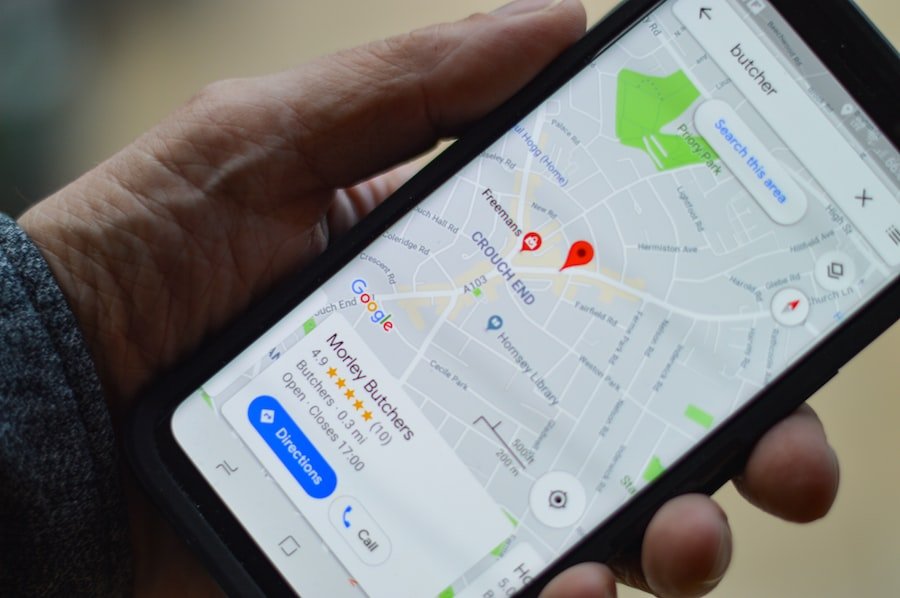Maximizing Your Local Business Visibility with Google Maps and SEO
In today’s digital age, having a strong online presence is crucial for businesses of all sizes. However, for local businesses, visibility in the local market is especially important. When potential customers are searching for products or services in their area, they are more likely to turn to local businesses that they can easily find and trust. This is where local SEO (Search Engine Optimization) comes into play.
Local SEO focuses on optimizing a business’s online presence to improve its visibility in local search results. By implementing effective local SEO strategies, businesses can increase their chances of being found by potential customers in their target area. This can lead to higher website traffic, more foot traffic to physical stores, and ultimately, increased sales and revenue.
The Role of Google Maps in Local SEO
One of the key factors that influence local SEO is Google Maps. When users search for businesses or services in their area, Google Maps often displays a map with local listings at the top of the search results page. These listings include information such as the business’s name, address, phone number, and website.
Having accurate and up-to-date information on Google Maps is crucial for local businesses. It not only helps potential customers find your business easily but also improves your chances of appearing in the top results on Google Maps. This can significantly increase your visibility and attract more customers to your business.
Creating a Google My Business Account for Your Business
To ensure that your business appears on Google Maps and other Google platforms, it is essential to create a Google My Business account. This free tool allows you to manage your business’s online presence across various Google platforms, including Google Maps, Google Search, and Google+.
Creating a Google My Business account is a straightforward process. First, you need to sign in to your Google account or create a new one if you don’t have one already. Then, you can search for your business on Google Maps and claim it as your own. If your business is not listed, you can add it by providing accurate information such as your business name, address, phone number, and website.
Optimizing Your Google My Business Profile for Maximum Visibility
Once you have created your Google My Business account, it is crucial to optimize your profile to maximize your visibility in local search results. Here are some tips to help you optimize your Google My Business profile:
1. Provide complete and accurate information: Make sure to fill out all the fields in your profile with accurate and up-to-date information. This includes your business name, address, phone number (NAP), website, hours of operation, and a brief description of your business.
2. Choose the right categories: Selecting the appropriate categories for your business can help Google understand what your business is about and improve its chances of appearing in relevant search results. Be specific and choose categories that accurately describe your products or services.
3. Add high-quality photos: Including high-quality photos of your business, products, or services can make your profile more appealing to potential customers. Make sure to use professional-looking images that showcase the best aspects of your business.
4. Encourage customer reviews: Customer reviews play a significant role in local SEO rankings. Encourage satisfied customers to leave reviews on your Google My Business profile by providing excellent service and asking for feedback.
Leveraging Customer Reviews to Boost Your Local SEO Ranking
Customer reviews have a significant impact on local SEO rankings. Positive reviews not only improve your credibility and reputation but also increase your chances of appearing in the top results on Google Maps and other platforms.
To encourage customers to leave reviews, make it easy for them by providing clear instructions on how to do so. You can also offer incentives such as discounts or freebies for leaving a review. Responding to reviews, both positive and negative, shows that you value customer feedback and can help build trust with potential customers.
Importance of NAP Consistency for Local SEO

NAP consistency refers to having consistent and accurate business information, including the name, address, and phone number, across all online platforms. This is crucial for local SEO because search engines rely on this information to determine the relevance and credibility of a business.
Inconsistent NAP information can confuse search engines and potential customers, leading to lower visibility in local search results. To ensure NAP consistency, make sure to update your business information on all online directories, social media platforms, and your website. Regularly check for any discrepancies or outdated information and correct them promptly.
Using Local Keywords to Enhance Your Google Maps Visibility
Local keywords are specific keywords or phrases that include the name of a location or region. For example, if you own a bakery in New York City, using keywords such as “New York City bakery” or “bakery in NYC” can help improve your visibility in local search results.
To choose the right local keywords, start by conducting keyword research using tools like Google Keyword Planner or SEMrush. Look for keywords that have a high search volume and low competition. Incorporate these keywords naturally into your website content, including your Google My Business profile, website copy, blog posts, and meta tags.
Building Local Backlinks to Improve Your Local SEO Ranking
Backlinks are links from other websites that point back to your website. They are an essential factor in determining the credibility and authority of a website in the eyes of search engines. When it comes to local SEO, building local backlinks can significantly improve your local search rankings.
To build local backlinks, start by reaching out to other local businesses or organizations in your area. Offer to collaborate on content or events that are relevant to both parties. You can also sponsor local events or charities and ask for a backlink in return. Additionally, consider guest posting on local blogs or websites to gain exposure and earn backlinks.
The Importance of Mobile Optimization for Local SEO
With the increasing use of smartphones and mobile devices, having a mobile-optimized website is crucial for local SEO. Google prioritizes mobile-friendly websites in its search results, especially for users searching on mobile devices.
To optimize your website for mobile devices, make sure it loads quickly, has a responsive design that adjusts to different screen sizes, and is easy to navigate on a small screen. Use large fonts and buttons that are easy to tap with a finger. Test your website on different mobile devices to ensure a seamless user experience.
Measuring Your Local SEO Success with Google Analytics
To track the success of your local SEO efforts, it is essential to use tools like Google Analytics. This free tool provides valuable insights into your website’s performance, including the number of visitors, their demographics, and how they found your website.
To measure your local SEO success with Google Analytics, set up goals and conversion tracking. This allows you to track specific actions that users take on your website, such as making a purchase or filling out a contact form. By analyzing this data, you can identify areas for improvement and make data-driven decisions to optimize your local SEO strategy.
Conclusion:
In conclusion, local business visibility is crucial for attracting customers in today’s digital age. By implementing effective local SEO strategies, businesses can improve their visibility in local search results and increase their chances of being found by potential customers. Key factors that influence local SEO include Google Maps, Google My Business profiles, customer reviews, NAP consistency, local keywords, local backlinks, mobile optimization, and tracking progress with tools like Google Analytics. By optimizing these aspects of their online presence, businesses can enhance their local SEO presence and drive more traffic and sales.
FAQs
What is Google Maps?
Google Maps is a web mapping service developed by Google that provides satellite imagery, street maps, panoramic views of streets, real-time traffic conditions, and route planning for traveling by foot, car, bicycle, or public transportation.
What is SEO?
SEO stands for Search Engine Optimization. It is the practice of optimizing your website to increase the quantity and quality of traffic to your site through organic search engine results.
How can Google Maps help my local business?
Google Maps can help your local business by providing potential customers with your business location, hours of operation, contact information, and reviews. It can also help your business appear in local search results, increasing your visibility to potential customers.
What is local SEO?
Local SEO is the practice of optimizing your website and online presence to increase visibility in local search results. This includes optimizing your Google My Business listing, building local citations, and creating localized content.
How can I optimize my Google My Business listing?
To optimize your Google My Business listing, make sure all of your business information is accurate and up-to-date, including your business name, address, phone number, and website. Add photos and videos to your listing, respond to customer reviews, and regularly post updates and promotions.
What are local citations?
Local citations are mentions of your business name, address, and phone number on other websites, such as directories, review sites, and social media platforms. Building local citations can help improve your local search rankings and increase your visibility to potential customers.
What is localized content?
Localized content is content that is tailored to a specific geographic location. This can include blog posts, landing pages, and social media content that is relevant to your local audience and includes local keywords and phrases. Localized content can help improve your local search rankings and attract more local customers.







